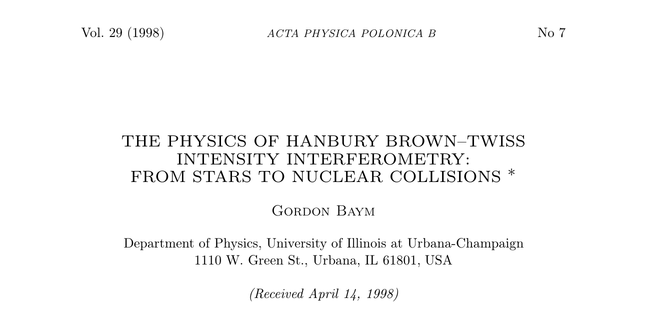
This nice paper[1] by Gordon Baym gives an overview of the HBT effect with a focus on nuclear reactions, indeed making the nice parallel between Hanbury Brown's original goal of measuring stars with what became of the technique to probe inside nuclear matter:

It has a great historical overview as well as an interesting discussion of both the classical and quantum derivations of the effect, which makes it an interesting read even for people not interested in stars or high-energy nuclear physics and particle collisions.
The HBT technique is still useful there to provide «information on the space-time geometry of the collision» where:
The effect is one of the few measurements in elementary particle detection that depends on the wave mechanics of the produced particles.
Baym attributes the detection of interferometry in particle collisions to Goldhaber et al.[2] who studied angular correlations of pions pp collisions at the Bevatron.
The technique is now standard in high-energy collisions, from heavy ions, to meson–nucleon interactions, to electron–positron annihilation.
This is more effective for bosons than for fermions which typically interact much more strongly and wash out the (anti-) correlations. Instead «neutrons at small relative momenta have significant final state strong interactions».
References
- ↑ The Physics of Hanbury Brown-Twiss Intensity Interferometry: from Stars to Nuclear Collisions. G. Baym in Acta Physica Polonica B 29:1839 (1998).
- ↑ Influence of Bose-Einstein Statistics on the Antiproton-Proton Annihilation Process. G. Goldhaber, S. Goldhaber, W. Lee and A. Pais in Phys. Rev. 120:300 (1960).